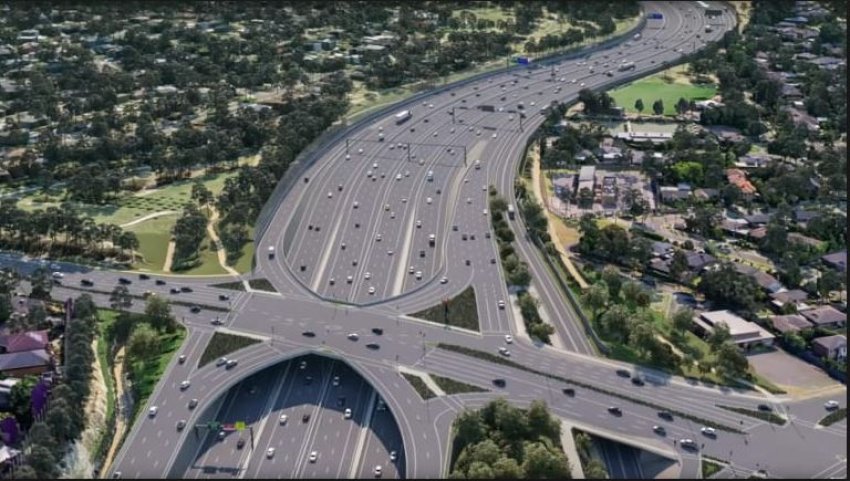
The Victorian road lobby is at it again. Fresh from being defeated on the East-West Link, the rent-seeking tollroad builders have been given a construction gift in the form of a massive new project in Melbourne’s east.
Since both the Labor state government and the Coalition opposition have signed on to the creatively named North-East Link, the project is almost certain to go ahead, barring a major community campaign against it.
The tollway project has now ballooned out to a jaw-dropping $15.8 billion, making it the second most expensive road project in Australian history behind the controversial WestConnex toll road in Sydney.
The North-East Link was originally conceived as part of the 1969 Henry Bolte Transportation Plan, which has driven road construction in Melbourne ever since.
It will connect the eastern end of the M80 Ring Road near Greensborough with the Eastern Freeway at Bulleen Road, using a series of sprawling flyover interchanges, road trenches and underground tunnels.
As part of the project, the Eastern Freeway will be expanded to hold up to 14 lanes of traffic, removing the rail reserve centre median and ending Eastern suburbs residents’ dreams of a Doncaster rail line.
Hundreds of houses will also need to be acquired for construction — letters of acquisition have already been issued — and large areas of green space will have to be bulldozed.
The government claims the link road will reduce congestion and travel times. However, many studies, such as one from the Grattan Institute in 2017, have shown that expanding motorways often increases traffic, or just shifts congestion to other areas.
In this case, it is likely to be to the Greensborough Bypass, Bulleen Road and Hoddle Street. This will, in turn, drive calls to rehabilitate the defeated East-West Link, further shifting traffic to other areas ripe for tollway construction.
For example, the main argument for EastLink was to ease congestion on the parallel Springvale Road. However, as reported in the Herald Sun in 2010, it took just two years for travel to again become congested on that road.
Labor has promised to release the North-East Link tender after the November state election. There is no doubt that it will be a Public Private Partnership, where the government neither builds the project, nor contracts out construction directly, but instead releases a contract to build, own and maintain the road in exchange for revenue from toll booths.
This way the government can claim that the project is not affecting the budget bottom-line while ignoring the fact that it foregoes all toll revenue, provides the free lease of public (and compulsorily acquired) land and possibly includes annual revenue top-ups.
Such contracts are primarily used for private companies (particularly, the behemoth road-operator Transurban), to suck up government and user payments over the decades in a vast exercise of rent-seeking.
The North-East Link project is being spruiked alongside a plan for the enormous Suburban Rail Loop, which has excited all those interested in public transport.
However, the government is only proposing to begin this project after winning the next two elections, with completion set for an absurdly protracted 2051.
There is no doubt the announcement was made to placate public transport groups with distant promises while the private road construction goes full steam ahead.
Transurban and the road lobby have already had a win recently with the acceptance of their unsolicited bid to build the $6.7 billion Westgate Tunnel. This project is supposedly a “free gift” to the state, but it comes with additional toll booths and decades’ worth of tolling extensions on existing roads, including on the Tullamarine Freeway, built by VicRoads in the 1960s.
Since Transurban started building roads in the 1990s, under then-Liberal premier Jeff Kennett, it has raked in tens of billions of dollars in revenue that should rightly belong to the public.
All these vast, private, toll roads consume construction resources that would be far better spent fixing the neglected public transport system and other urgent infrastructure needs as well as planning the transition away from fossil fuels.
Residents and transport users’ demands are being ignored while governments assist huge corporations’ drive for profit at the expense of planning or thought given to the destructive long-term impacts these projects have.
[Jack Stickney is a civil engineer with experience in the road construction industry.]